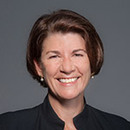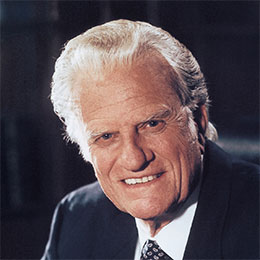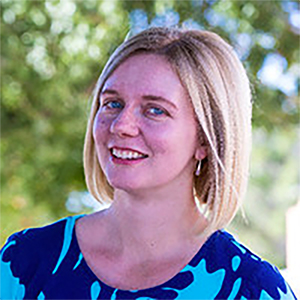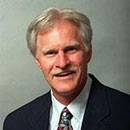Culinary grads learn how to cook up a business
Published in Lifestyles
PITTSBURGH — Reem Helou was listening attentively. It was the last day of her menu planning class in the Community College of Allegheny County's culinary program.
Her professor, Charles Wallander, an adjunct instructor and advisor at the school, was going over the final assignment, which was due before the stroke of midnight that night.
"If you're going to be, at some point in time, an owner, a director, a general manager, a chef, anybody who's in charge of menu items, you've got to know how to price out and how to create menus," he said.
"A menu is also a business plan," said Wallander, who has held numerous positions in the hospitality industry.
The information you use to plan a menu, he explained to his class, is information you could take to a bank to get a loan, for example.
Baked into what some might think is a simple sheet of paper is the restaurant concept, target market, price point, location, a demographic study of the location (how busy it is, age groups, marital status of the local population, income, ethnicity) and a feasibility study (including costs and consideration of how a specific concept will work in a specific neighborhood).
Finding a career path
For Helou, the menu planning assignment was "probably one of the hardest projects I've ever had to do in my life. ... Very hard, but very good."
Originally from Homs, Syria, she was driven to emigrate, with her family, by the civil war in her home country.
Now 30, she left Syria at 17, and moved to Detroit to live with her sister. (Her parents moved to Ohio.) When her sister and her sister's husband moved to Pittsburgh, she moved with them.
Upon arrival, she was not even sure if her family would be staying in the U.S. Once settled in Pittsburgh, she had a few false starts in her studies. Initially, she earned a CCAC degree in early childhood education, then studied creative writing at the University of Pittsburgh.
She decided to pursue an associate's degree in culinary arts because she had been working at a local restaurant as a server and then had been promoted to manager.
"That's when I was like, OK, I want to learn more about the industry," she said.
But as part of the program, she had to learn cooking skills as well as management skills — and she realized she loved cooking. That changed her career path from front-of-the-house manager to chef. She currently is a pastry chef at the Argentinian restaurant Balvanera in the Strip District, where she works under head pastry chef Ginger Baldwin.
The opportunity to learn baking and pastry with chefs at CCAC has been "great," she said, and her experience at Balvanera "amazing."
Before continuing on her career, though, she had to finish her project.
The project
For the final project, besides concepting, analyses and so on, students had to price out a recipe and indicate how they arrived at the figure. They had to research ingredients and prices of preparing dishes, including easily forgotten ingredients like spices, and consider the "free" items that go with certain plates — like rolls, butter, sides.
Although not difficult, there was a lot of math involved.
Students had to explain how they would accommodate dietary restrictions, and consider the typography of the menu, the placement of items on the menu (high-profit items are given the top right corner) and the organization of dishes into categories (appetizers, soups, salads, entrees, sides).
Then there's the psychological, marketing aspect that goes into menu writing. Wallander offered up a succulent-sounding example:
"A six-ounce Black Angus filet mignon char-grilled to perfection, drizzled with a savory chanterelle mushroom sauce."
"When you read a good menu description, you can almost taste it," he said.
Included in the project was also a one-page training document to explain to servers how to market the menu, how to upsell and steer customers to high-value items.
"You should really love your menu," Wallander said. "It's the most important thing in the house."
Understanding the why
The following week, the projects had been submitted and amid the strains of "Pomp and Circumstance" at universities and schools all around town, CCAC culinary students were also graduating.
On the last day of school, Wilkinsburg native and culinary student Catherine McDonough stood behind her portfolio, displayed on a table in the culinary arts building.
About 25 local restaurateurs and chefs came through to view students' portfolios and chat with them, a sort of "mini career day," as Art Inzinga, coordinator of the CCAC culinary arts program, put it.
"This is one of my favorite projects," McDonough said of the menu planning exercise, which was included in her portfolio.
She was proud of her concept, a pizza restaurant featuring different pizza styles from around the country — an idea borne of her moves when she was a member of the military, and her longing for Pittsburgh pizza.
Other students were equally enthusiastic about the class project.
London Hughes said she had worked in several restaurants, including as a line cook, and had viewed management decisions from a "worker's point of view."
"Now I'm understanding the management point of view," she said.
Faisal Alawameh echoed these sentiments. He had worked in the hospitality industry in his native Syria, as well as in Jordan.
"This class really helped me so much because I had experience in everything, but not really in managing a restaurant," he said.
He plans to soon return to Syria and hopes his training will aid him in opening his own establishment there.
"A lot of students are already working in the business, so they're familiar with certain aspects," Wallander said. "But they don't really understand the why."
A bright future
As for Helou, she managed to turn in her assignment in the nick of time, ahead of widespread electrical outages — "5 minutes before I lost power and WiFi," she said.
Though she aims to continue working as a pastry chef for now, she hopes to one day realize her concept for the menu planning class. She wants to open a Syrian brunch spot that would feature lesser-known specialties, like manakish — a za'atar-topped flatbread, which can be served with salad or other accompaniments.
"I'm very hungry for more in this industry," she said. "I want to really, really learn."
As she increases her knowledge and skills by working as a chef, however, she will keep her restaurant idea in the back of her mind.
"I love this concept way too much not to think about it."
With her twin short and long-term ambitions, Helou exemplifies what Inzinga wants for his students.
"Our goal for students is that we don't want them to be cooks for the rest of their life," he said. "Our goal is that they become the leaders of the industry. And from what I've seen from these students ... the future of the industry looks bright."
©2025 PG Publishing Co. Visit at post-gazette.com. Distributed by Tribune Content Agency, LLC.



























Comments